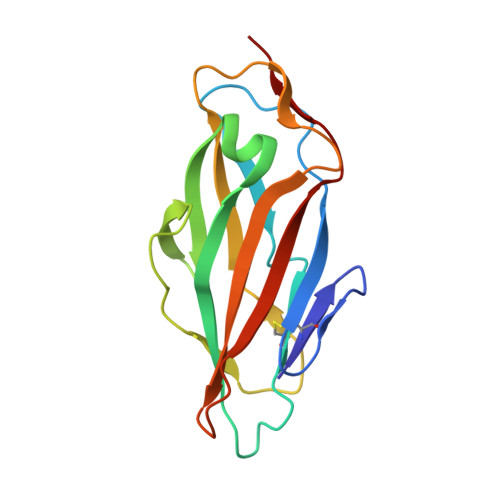Insightful Improvement in the Design of Potent Uropathogenic E. coli FimH Antagonists.
Mousavifar, L., Sarshar, M., Bridot, C., Scribano, D., Ambrosi, C., Palamara, A.T., Vergoten, G., Roubinet, B., Landemarre, L., Bouckaert, J., Roy, R.(2023) Pharmaceutics 15
- PubMed: 36839848
- DOI: https://doi.org/10.3390/pharmaceutics15020527
- Primary Citation of Related Structures:
8BVD - PubMed Abstract:
Selective antiadhesion antagonists of Uropathogenic Escherichia coli (UPEC) type-1 Fimbrial adhesin (FimH) are attractive alternatives for antibiotic therapies and prophylaxes against acute or recurrent urinary tract infections (UTIs) caused by UPECs. A rational small library of FimH antagonists based on previously described C -linked allyl α-D-mannopyranoside was synthesized using Heck cross-coupling reaction using a series of iodoaryl derivatives. This work reports two new members of FimH antagonist amongst the above family with sub nanomolar affinity. The resulting hydrophobic aglycones, including constrained alkene and aryl groups, were designed to provide additional favorable binding interactions with the so-called FimH "tyrosine gate". The newly synthesized C -linked glycomimetic antagonists, having a hydrolytically stable anomeric linkage, exhibited improved binding when compared to previously published analogs, as demonstrated by affinity measurement through interactions by FimH lectin. The crystal structure of FimH co-crystallized with one of the nanomolar antagonists revealed the binding mode of this inhibitor into the active site of the tyrosine gate. In addition, selected mannopyranoside constructs neither affected bacterial growth or cell viability nor interfered with antibiotic activity. C -linked mannoside antagonists were effective in decreasing bacterial adhesion to human bladder epithelial cells (HTB-9). Therefore, these molecules constituted additional therapeutic candidates' worth further development in the search for potent anti-adhesive drugs against infections caused by UPEC.
- Glycosciences and Nanomaterial Laboratory, Université du Québec à Montréal, Succ. Centre-Ville, P.O. Box 8888, Montréal, QC H3C 3P8, Canada.
Organizational Affiliation:

















